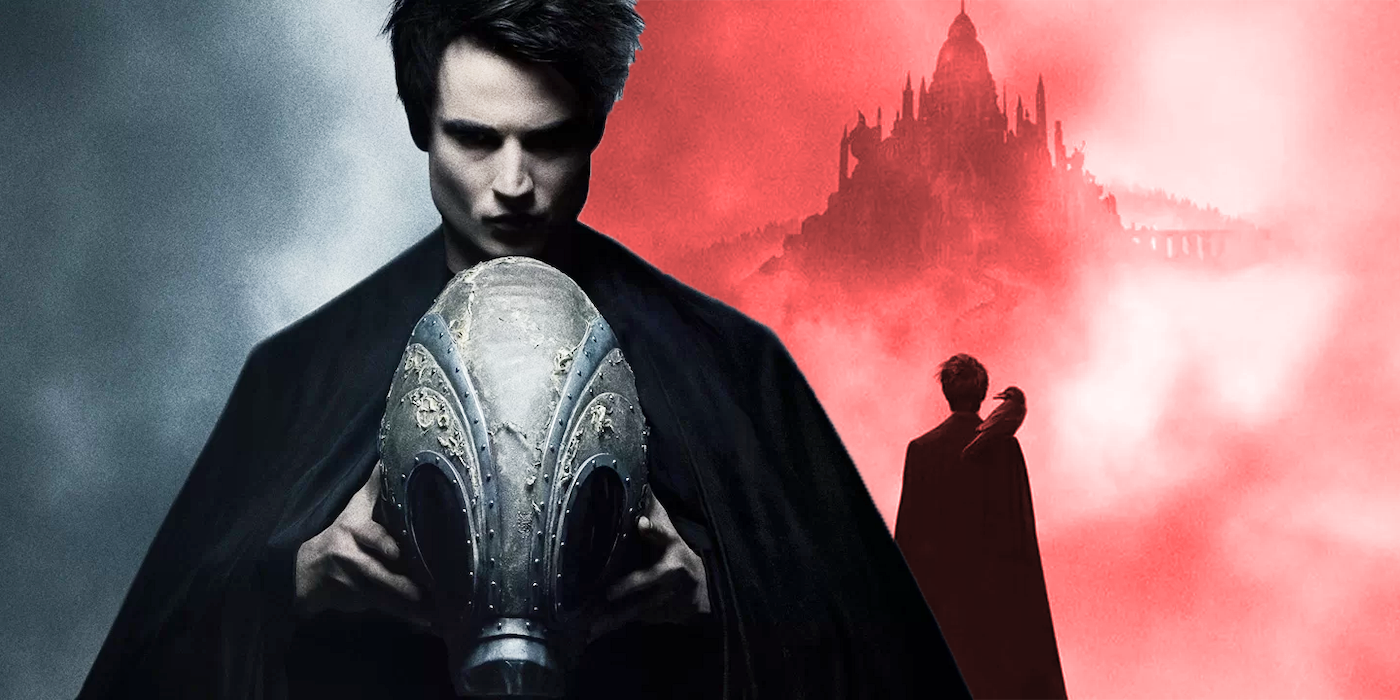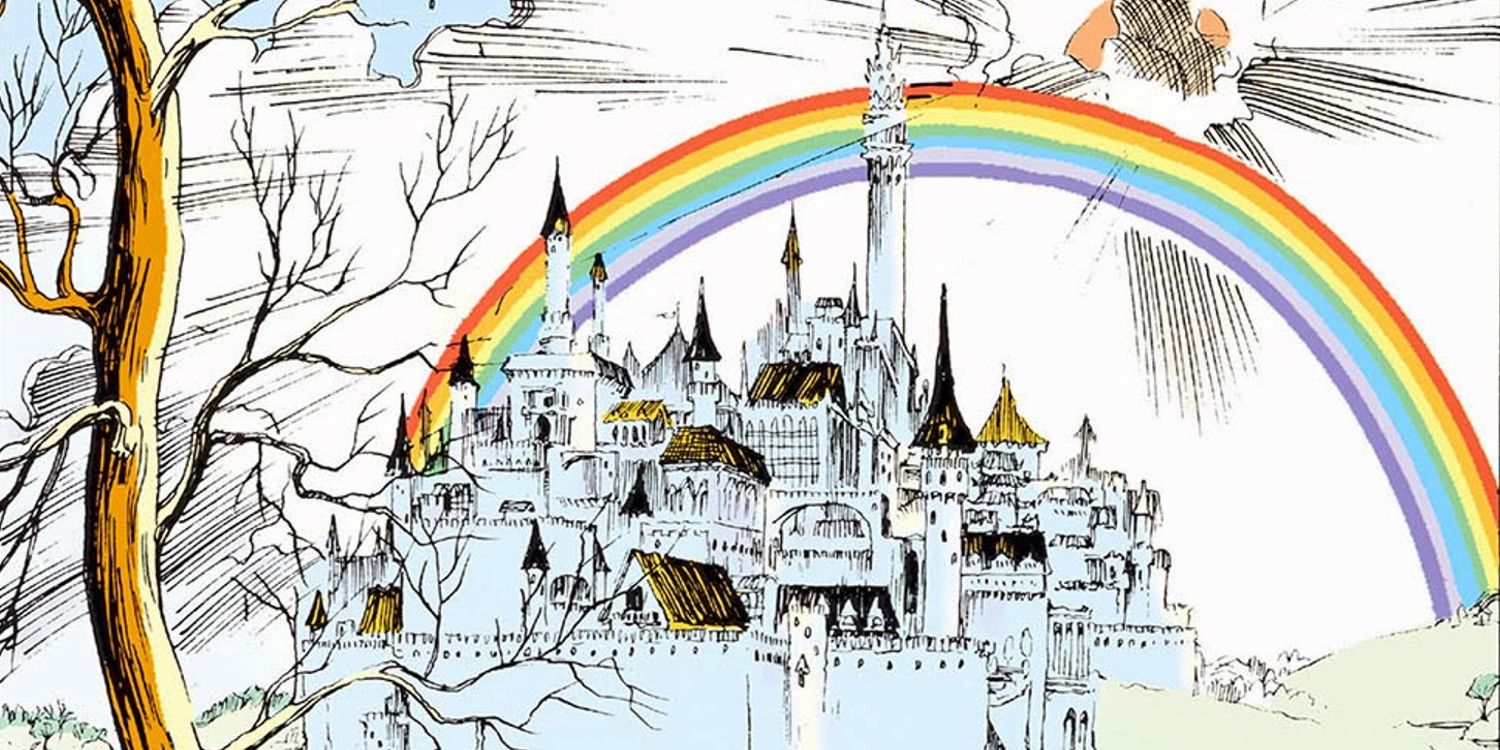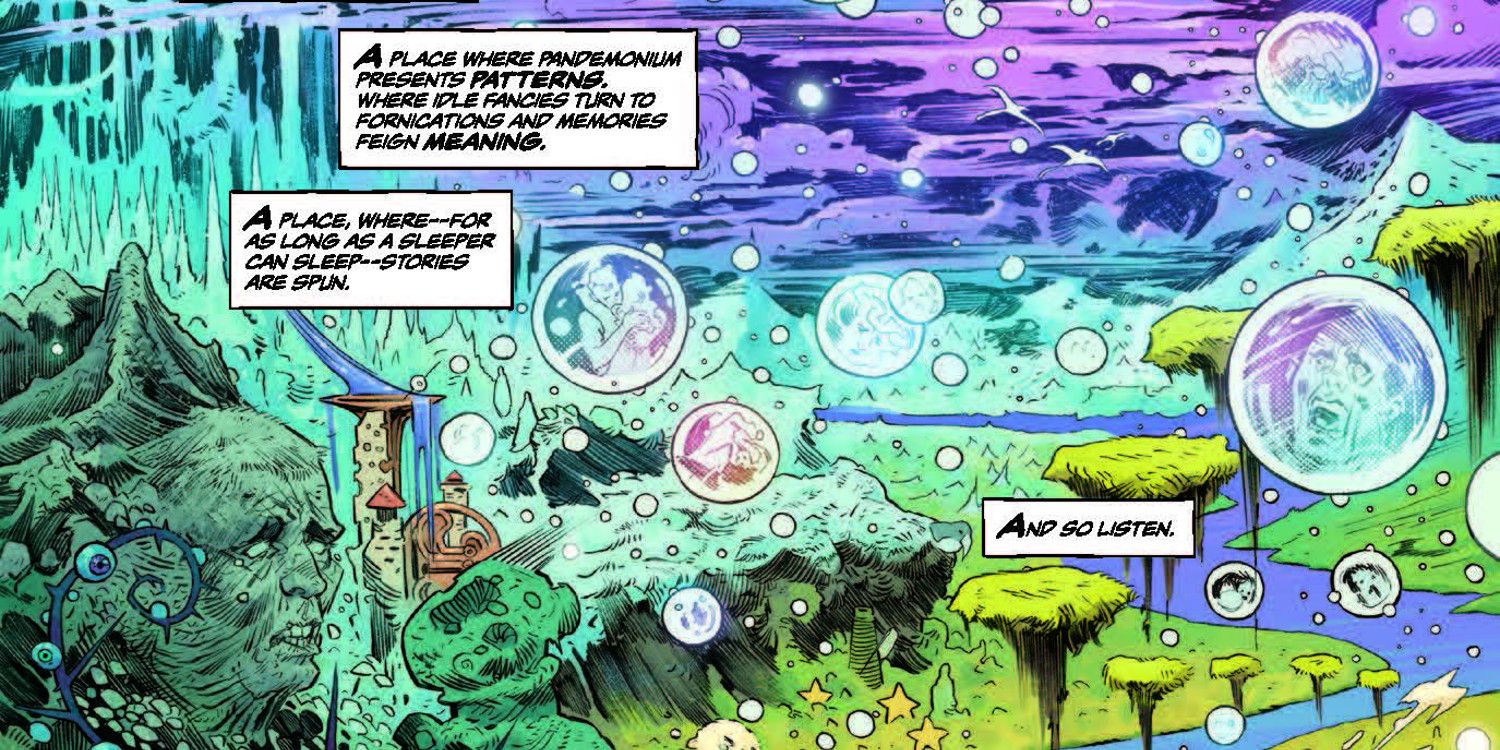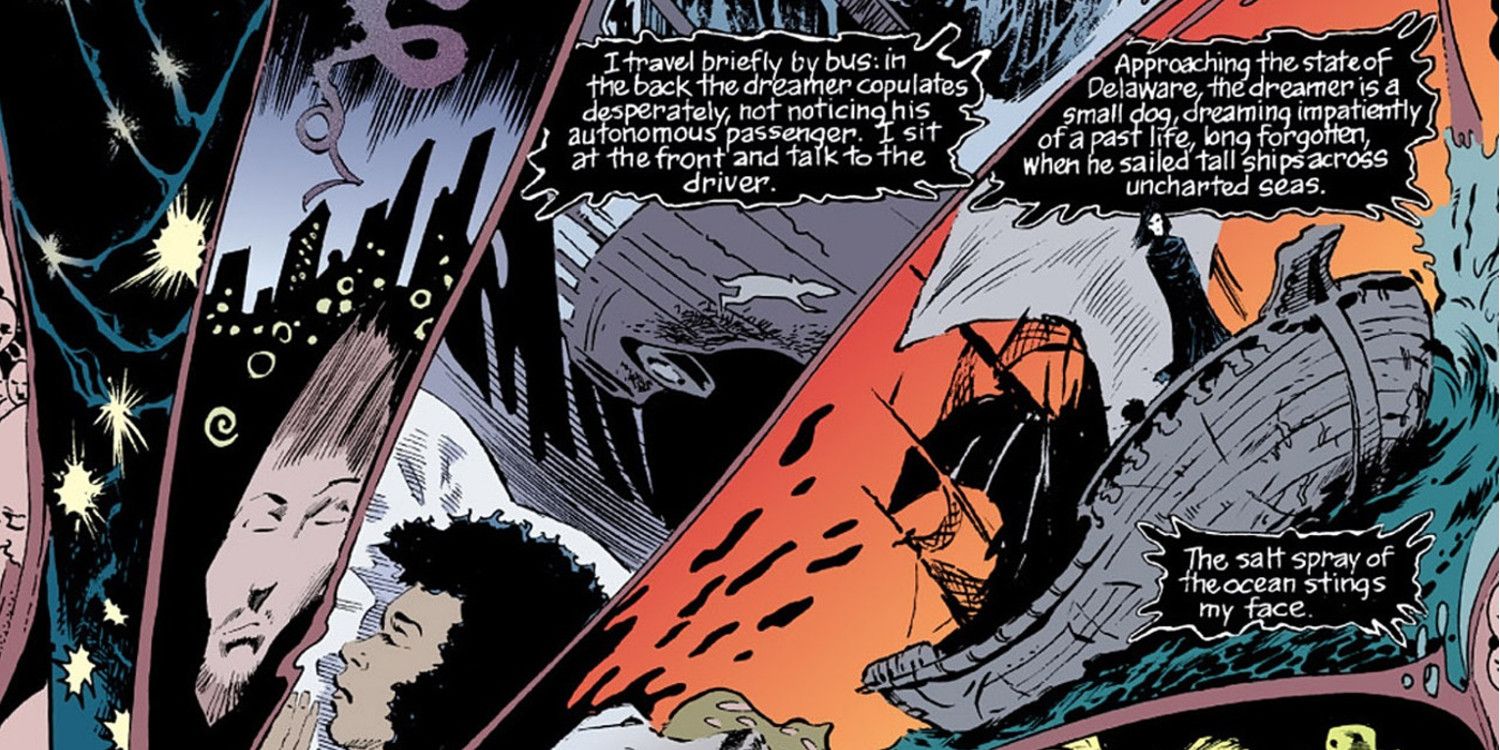
The realms known as the Dreaming and the Waking World form the setting of The Sandman, but the rules governing that setting require explanation. Originally published across 75 monthly comics and one special from 1989 to 1996, The Sandman won multiple awards, including a World Fantasy Award for Best Short Story. It is widely considered to be the first great work by legendary writer Neil Gaiman, redefining the cosmology of DC Comics forever.
The Sandman introduced the idea of the Endless; seven beings who are god-like in their power, yet not dependent upon worship like deities. Yet, like the gods, the Endless owe their existence to humanity and are shaped by them. The Endless exist purely because all sentient life believes, on some level, that there must be some intelligence governing primal forces such as fate, change, and death.
The action of The Sandman centers around Dream of the Endless, who is both the source of all dreams and nightmares and the creative spirit responsible for all stories. This marks Dream, a.k.a. Morpheus, as one of the most powerful cosmic beings in all of DC Comics, as he has near complete control of his own realm and has some limited ability to alter reality itself. This places him on par with other eternal figures such as the New Gods of New Genesis and Apokolips, but the rules regarding his powers and the realm he rules go largely undefined within the early chapters of The Sandman that are being adapted for the new Netflix series. This has led to some confusion about The Dreaming and the Waking World.

The Dreaming is the name of the near infinite domain of Morpheus, Dream of the Endless. Much like the lands of the Fisher King in Arthurian legend, The Dreaming is a part of Dream and shifts according to his whims and moods. Without Dream's presence, the Dreaming would slowly start to decay and fall apart, as occurred in the opening chapter of The Sandman. When Dream is within the Dreaming, however, neither he nor any mortal being within the realm can suffer harm.

The Dreaming acts as a mirror of the material plane, which is also known as the Waking World. Every universe making up DC Comics' multiverse is located within the Waking World. Dream once noted that all intelligent beings spend one-third of their lives living within The Dreaming, entering his realm every night when they go to sleep.

It was confirmed in multiple issues of The Sandman that all living creatures possessing enough intelligence to dream can access The Dreaming while they are asleep. This was shown most directly in The Sandman #18, "A Dream of a Thousand Cats," which suggested that cats were once the dominant life form of the multiverse until a thousand enslaved humans dreamed of a world where they were the masters instead of the cats and that shared dream shaped reality. Other issues of The Sandman made reference to the dreams of other animals, including dogs. The gods of the DCU, who are said to start as dreams before drawing enough power and worship to manifest in the Waking World, can also enter The Dreaming freely, though few do so for fear of placing themselves under Dream's control.

Over the course of The Sandman, a number of rules are revealed regarding The Dreaming and its ruler. Chief among these is that Dream is forbidden from taking the life of any sentient being. The one exception to this rule is the rare occasions when a mortal becomes a dream vortex, whose powers of lucid dreaming risk collapsing the whole of reality, as in the case of Rose Walker. This prohibition also extends to the denizens of The Dreaming, which is why Dream sought to unmake the nightmare known as the Corinthian after he traveled into the Waking World to begin killing humans in earnest.
Rather than making the Dream King seem weak, this prohibition against killing makes him all the more terrifying as an adversary. Dream is a being of limitless imagination and the punishments he delivers are creative and cruel. A prime example of this is the curse of Eternal Waking, in which a mortal sleeps for the rest of their life while experiencing a succession of nightmares from which they seem to awake only to find themselves in another nightmare. Dream is also the only being allowed to manipulate The Dreaming and he is swift to punish any who create dreams or nightmares on their own.
Mortals who die while in The Dreaming have the option of becoming residents of The Dreaming rather than going on to whatever afterlife awaits them. Matthew the Raven, who was originally Matt Cable in Swamp Thing, is a prime example of this. This is also the case with Cain and Abel, the keepers of the House of Mystery and House of Secrets, who, in The Sandman, are the biblical Cain and Abel given a second life as storytellers. The ghosts of mortals can survive within The Dreaming, as shown by the case of Hector Hall, but Dream does not allow this to occur and will send any spirit not sworn to his service on to their afterlife. Gods who die are said to return to The Dreaming, but what becomes of them afterward is unclear. They may be remembered as stories or may be reabsorbed into the dream stuff forming the realm.
The Dreaming and the characters who inhabit it in The Sandman are also governed by the classical laws of Hospitality, in which a Host is required to provide for the needs and protection of their Guests while the Guests are likewise obligated to respect the Host and the rules of their domain. Dream views all mortals who enter The Dreaming as his guests and views any threat to their well-being while they are in his care as a personal attack. This led to one of his rare appearances outside the pages of The Sandman and a team-up with the Justice League of America in JLA #22-23 in order to fight an invasion of Earth through The Dreaming initiated by the telepathic Starro the Conqueror.
The Sandman season 1 premieres on Netflix on August 5, 2022.
from ScreenRant - Feed https://ift.tt/ZanlWz3
